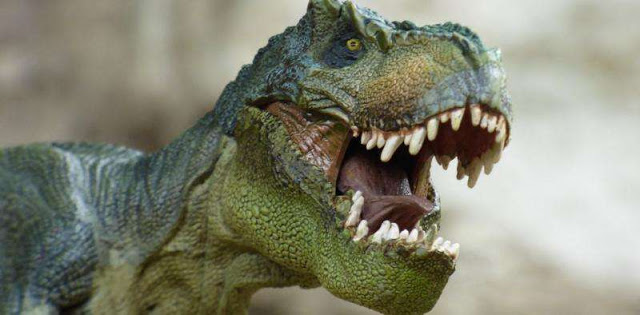
Dinosaurs were the dominant group of terrestrial vertebrate animals for more than a hundred million years. Some of them grew to gargantuan sizes but even these mighty creatures would have fallen prey to parasites.
But when you look back on the geological record, parasite fossils are really rare. This is because fossilisation itself is a rare occurrence and most parasites are tiny, squishy things that don’t get preserved under anything less than the most ideal conditions.
Fortunately, there is growing interest in the study of fossil parasites, and there are some fossils which give us a glimpse at what kind of parasites infected dinosaurs.
One source of fossilised parasites is amber, which is fossilised tree sap. Some bits of amber can contain insects that became entrapped millions of years ago.
Trapped in the amber
In Michael Crichton’s novel Jurassic Park, and Steven Spielberg’s follow-up movie, dinosaurs were cloned from DNA that was extracted from amber-entombed insects that once fed on dinosaur blood.
Unlike in Jurassic Park though, the fossilised biting insects we find today do not contain intact dinosaur DNA, but they do contain fossils of parasites that might have infected dinosaurs.
Some biting midges from the Cretaceous were actually carrying malaria-type parasites in their gut much like the type found in modern birds and reptiles. So perhaps some dinosaurs might have contracted malaria and other such insect-borne diseases from those blood-suckers.
The internal organs of a dinosaur would have also been a cosy home for many internal parasites. In the Jurassic Park movie, Dr Ellie Sattler was up to her elbows in a Triceratops dung pile looking for traces of lilac berries.
If she had the opportunity to examine some of that sample under the microscope, it is likely she might have also found eggs of various parasitic worms.
While there are no Triceratops and other big dinosaurs roaming around today leaving convenient dung piles for us to examine, the next best thing we have is coprolite.
Dinosaur poop
Coprolite is simply the technical term for fossilised poop, and as any parasitologist or veterinarian knows, riffling through poop samples is a routine way for figuring out what parasites are found in an animal.
It was through examining samples of fossilised poop that scientists have found evidence for parasitic flukes and roundworms in dinosaurs.
So how big did these parasite get? Unfortunately, we can’t really tell from their eggs. Both giant tapeworms and tiny flukes start out life as microscopic eggs. It’s tempting to think massive creatures such as dinosaurs must have had massive parasites, but that’s not necessarily the case.
Today’s Great White Sharks are infected by tiny tapeworms, Humpback whales are covered in whale lice (which are actually crustaceans) that measures just a few millimetres long, and blood flukes that infect elephants are skinny worms that measure about a centimetre in length.
Some giant sauropod dinosaurs might have had giant tapeworms, but it is just as likely that their guts and other organs would have had been filled with millions of tiny roundworms and flukes.
Friend or foe
For a large animal, a colony of tiny worms are not much of a burden and in low numbers their impact is relatively low. But not all parasites are so benign.
For example, palaeontologists examining the jaw bones of tyrannosaurid dinosaurs have found pockmarks similar to those found in birds infected with a single-cell parasite call Trichomonas which causes debilitating lesions in their mouth and throat.
So the great Tyrannosaurus rex might have been afflicted with and succumbed to parasites similar to the ones that plague pigeons today.
Fossils allow us to put a minimum age on how long a particular group of parasites have been around, what host they infected, and how they compare with their living relatives.
Tapeworms had been infecting sharks back when the dominant land predators were saber-toothed proto-mammals called Gorgonopsians. Tongue worms (which today live in the respiratory tract of terrestrial vertebrates) were hanging out on the carapace of crustaceans during the Silurian period (about 425 million years ago) when the ocean was filled with giant sea scorpions.
When the dinosaurs came along, they simply presented new opportunities for potential parasites.
Given that parasites can often shape entire ecosystems through the effects they have on their hosts, it is important to keep in mind the roles parasites might have played in the prehistoric world.
There might be a Velociraptor which had been lagging behind in the pack because it had fallen ill from dino-malaria, or a Tyrannosaurus rex chomping on the rump of a Triceratops might have swallowed a whole load of parasitic worm larvae with every mouthful.
A Jurassic World full of dinosaurs is incomplete without its share of prehistoric parasites.
Note: The above post is reprinted from materials provided by The Conversation.
This story is published courtesy of The Conversation (under Creative Commons-Attribution/No derivatives).










